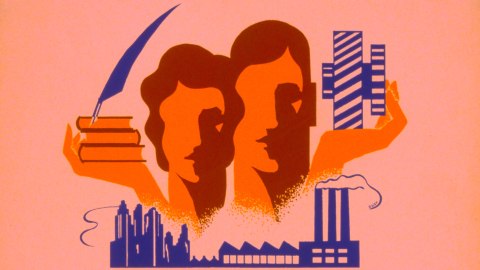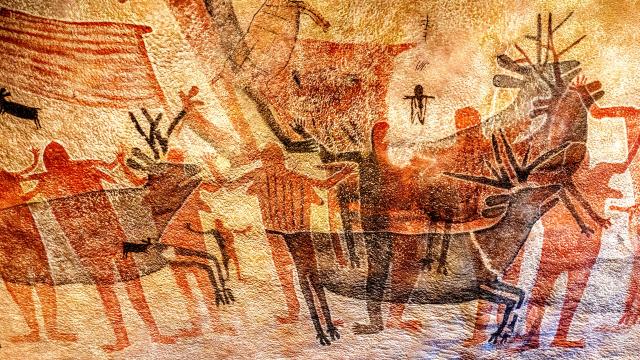Why great managers don’t spend equal time on criticism and praise

- The instinct of modern managers is to focus on opportunities for improvement.
- Concentrating on employee weaknesses fails to improve performance.
- To inspire great performance, managers should lead with meaningful feedback based on unique strengths.
With the rise of the Industrial Revolution, standardized process efficiencies through automation — factories, mills, quality control, accounting and workflow planning — brought conveniences, cost efficiencies and better overall lives for everyone.
The goal of many early management thinkers such as Adam Smith, Frederick Winslow Taylor, Henry Gantt, Frank and Lillian Galbreth, and Herbert Townes was to increase the efficiency and consistency of production, reduce variation, and make processes more predictable with fewer errors.
Leaders could only be as effective as their managers, so giving managers a process to follow was essential. Process efficiency was integrated into how people were managed — find defects and correct weaknesses.
Human progress developed quickly through the Industrial Revolution, but human development didn’t.
In designing the processes that led to production efficiency, leaders took advantage of one of human nature’s greatest strengths: Our brains are hardwired to critique and find fault. Defect reduction is critical, particularly in environments where lives and safety are at stake. In more modern workplaces, managers write up annual employee reviews, and the first instinct is to focus on failures or “opportunities for improvement.”
Traditional performance management is set up to rate and rank employees and focus primarily on their weaknesses. But this approach fails to improve performance. Just 19% of employees strongly agree that how they are managed motivates them to do outstanding work.
We may be naturally wired to give criticism, but we sure aren’t wired to receive it. We crave praise any time we can get it. Constant criticism makes it nearly impossible for a manager and employee to build a healthy relationship.
What is the right balance between praise and criticism?
Critical feedback is necessary, and everyone needs to be aware and accountable for their shortcomings. But to inspire great performance, managers must lead with meaningful feedback that’s grounded in team members’ strengths. This simple starting point builds trust and increases the chance that critical feedback will turn into real development.
And no matter how many studies have been conducted illustrating the impact of humanistic (positive) psychology, it has remained easier for mainstream leaders and managers to try to inspire their workforces using systems that assume people operate like machines and that everyone develops in the same way.
How then should managers structure the “ideal” day for employees to encourage higher engagement and performance?
Today’s workers expect their manager to coach them — primarily based on their strengths.
Coaching managers change the starting point from this:
We are all the same, develop in the same way and need to be well-rounded.
to this:
We all have our own unique innate talents that can be turned into exceptional competencies.
In a study conducted years before the COVID-19 pandemic, Gallup asked employees to review their most recent workday and to report the number of hours they spent doing various activities. What best differentiated engaged from actively disengaged (miserable) employees was how much time they spent using their strengths — feeling so absorbed in their work that they experienced timelessness and flow.
Engaged employees spent 4x as much time using their strengths compared with what they don’t do well. Miserable employees spent about equal time using their strengths and weaknesses.
Today’s workers expect their manager to coach them — primarily based on their strengths.
Gallup replicated the study above in 2022. We again asked employees to reflect on their most recent workday and found that strengths mattered even more in today’s workplaces. In 2022, engaged employees spent 5x as much time using their strengths compared with what they don’t do well. Miserable employees still spent about equal time on their strengths and weaknesses.
Engaged employees aren’t immune to negativity or job stress. Gallup research shows that engaged or not, employees experience more stress during the workweek than on the weekend. That’s not surprising. Most employees deal with unexpected requests and workplace drama all the time.
A strengths approach to performance is not about glossing over weaknesses or making sure employees get to work on only assignments and projects they like. Everyone’s role includes tasks that aren’t much fun.
Likewise, there will be times when managers need to give employees constructive feedback to help them improve in their roles. But when managers treat feedback like it’s a balancing act, performance management falters. They shouldn’t spend equal time on criticism and praise. The scales should be heavily tilted toward what employees do best.
Management consultant Peter Drucker, and psychologists Abraham Maslow and Don Clifton, came to the same conclusion about human development in organizations: People develop best when they have opportunities to use their strengths. While their professional careers overlapped by almost five decades, these strengths pioneers took different paths to finding this essential truth.





